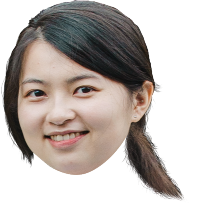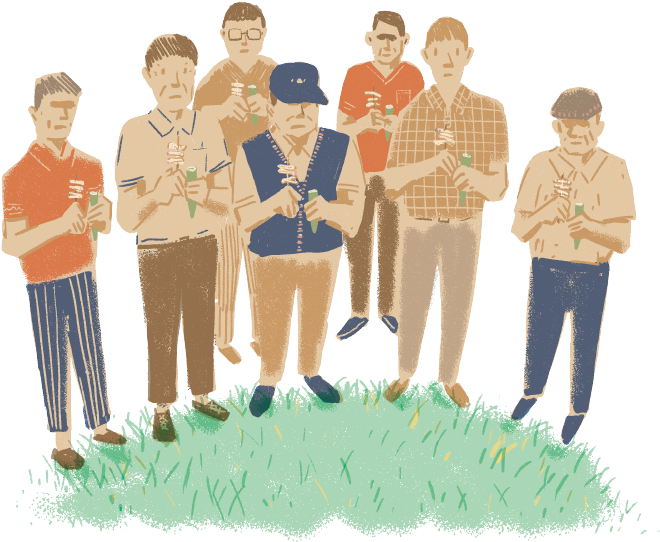What is it that made you decide you want to come home and learn about your culture?
 It was in 2014, my junior year in university. I returned to my indigenous community to take part in the paSta’ay, and that was a real wake-up call. The song and dance began at 6 o’clock that day, and I was sitting in the tourist area next to the ritual site. I carried with me the traditional indigenous clothes my grandmother gave me, but I couldn’t bring myself to put them on. I knew that I must wear traditional indigenous clothes when I dance, but I don’t even know how to dance. I could only sit with the tourists and watch everyone else dance because I don’t think I’m good enough for the clothes. I asked myself then, “can I really be a SaySiyat?”
It was in 2014, my junior year in university. I returned to my indigenous community to take part in the paSta’ay, and that was a real wake-up call. The song and dance began at 6 o’clock that day, and I was sitting in the tourist area next to the ritual site. I carried with me the traditional indigenous clothes my grandmother gave me, but I couldn’t bring myself to put them on. I knew that I must wear traditional indigenous clothes when I dance, but I don’t even know how to dance. I could only sit with the tourists and watch everyone else dance because I don’t think I’m good enough for the clothes. I asked myself then, “can I really be a SaySiyat?”
After the paSta’ay that year, I would sometimes spend weekends in my indigenous community doing field research for no specific purposes. But the turning point to my returning to the community to learn about my culture was in 2017 when my father passed away, and within 100 days, my grandmother passed away as well. Right there and then, I wanted to recover my own indigenous name but there was no one left in the family that I could ask. I went to talk to my relatives, but no one from my father’s generation understood the family history, so I had to visit the elders in our community one by one in search of the migration history of our family. My late father actually discussed with me that he wanted to return to the indigenous community upon his retirement, but in the end, it was all too late. As an afterthought, I felt that my father’s decease was so that I could finish his journey for him.
What past memories or experiences have you had regarding making pottery?
 My past pottery-making experience was the pottery course taken at the university, where we touched on the basics of processing the soil and shaping the clay. Coincidentally, prior to receiving this invitation, members of our community found clay near Xiangtian Lake and the elders began to wonder, “why does the SaySiyat not make pottery?” So before coming to Hualien, I interviewed elders in my indigenous community regarding pottery making, and one 80-year-old elder recalled seeing his/her grandmother making pottery. But such information was provided by one elder only, we cannot be sure if that was an isolated example. However, there are words related to pottery in the SaySiyat language, for example, lese is clay, towih is a clay pot with a narrow opening for winemaking, and kako is a clay pot with a wide opening for pickling vegetables. Therefore, the elders presumed that we should once have had a pottery-making culture, otherwise where did these words come from? We just probably lost it along the way of migration or assimilation with the non-indigenous peoples.
My past pottery-making experience was the pottery course taken at the university, where we touched on the basics of processing the soil and shaping the clay. Coincidentally, prior to receiving this invitation, members of our community found clay near Xiangtian Lake and the elders began to wonder, “why does the SaySiyat not make pottery?” So before coming to Hualien, I interviewed elders in my indigenous community regarding pottery making, and one 80-year-old elder recalled seeing his/her grandmother making pottery. But such information was provided by one elder only, we cannot be sure if that was an isolated example. However, there are words related to pottery in the SaySiyat language, for example, lese is clay, towih is a clay pot with a narrow opening for winemaking, and kako is a clay pot with a wide opening for pickling vegetables. Therefore, the elders presumed that we should once have had a pottery-making culture, otherwise where did these words come from? We just probably lost it along the way of migration or assimilation with the non-indigenous peoples.
What do you think about your first contact with the Pangcah Pottery today?
 The way I see it, there are two differences between the Pangcah Pottery and the SaySiyat, and one commonality. The difference lies in the sacrificial offerings. The Pangcah prepares three sets of offerings for a soil collection ritual, but the SaySiyat only prepares one set. For SaySiyat, the other world is in reverse, the less we give the more the ancestors receive, on the contrary, if we give more, they will find us stingy. The other difference is the soil consistency. Before today, I collected soil from Xiangtian Lake with our SaySiyat elders, but the soil from Xiangtian Lake oxidizes and changes color very easily, not so for the Pangcah soil.
The way I see it, there are two differences between the Pangcah Pottery and the SaySiyat, and one commonality. The difference lies in the sacrificial offerings. The Pangcah prepares three sets of offerings for a soil collection ritual, but the SaySiyat only prepares one set. For SaySiyat, the other world is in reverse, the less we give the more the ancestors receive, on the contrary, if we give more, they will find us stingy. The other difference is the soil consistency. Before today, I collected soil from Xiangtian Lake with our SaySiyat elders, but the soil from Xiangtian Lake oxidizes and changes color very easily, not so for the Pangcah soil.
The commonality I observed is how traditional cultures are like “tests put to us by the ancestors”, a trial of the heart. The sifting of soil prior to making pottery is like the preparation steps prior to weaving fabric, the complicated steps of collecting and scraping ramie, and twisting the thread, followed by sorting the warp, mounting, and weaving. One wrong step, which will not be noticed at the moment, will only be revealed at a much later stage when the pattern turns out wrong, and when we regret “why didn’t I sort the wrap better in the beginning?!” Such regret is much like that of remaining impurity causing the pottery to crack and burst.
How do you feel about trying your hand at making ceramic objects for the first time today?
 The teachers helped me with processing the soil so there was no problem, but when I have to do it alone in the future, I can see that I will have to pay attention to moisture control. During the shaping practice, Afo’ had me start with ceramic beads, first big and then gradually going smaller. I really felt it getting more difficult. I also made a ritual cup on the side. Even though there isn’t a term specifically for the ritual cup in the SaySiyat language, only wine cups for toasting, nowadays, when I do anything related to the SaySiyat culture, I have the habit of pouring wine for our ancestors as well, which is why I wanted to make a cup.
The teachers helped me with processing the soil so there was no problem, but when I have to do it alone in the future, I can see that I will have to pay attention to moisture control. During the shaping practice, Afo’ had me start with ceramic beads, first big and then gradually going smaller. I really felt it getting more difficult. I also made a ritual cup on the side. Even though there isn’t a term specifically for the ritual cup in the SaySiyat language, only wine cups for toasting, nowadays, when I do anything related to the SaySiyat culture, I have the habit of pouring wine for our ancestors as well, which is why I wanted to make a cup.
Does the SaySiyat have cultures that have once disappeared but are now being revitalized, like the Pangcah Pottery?
 We have “tallolong”, the River Cleansing Ritual, during which our people refrain from fishing and hunting around March to April, a movement very similar to environmental restoration. This ritual has not been practiced for thirty years, and this is the third year of its revitalization. The ritual begins with a “river-side meeting”, in which elders would gather to discuss public affairs. After the meeting, a blessing ritual will be performed for the river and the earth to give the fishes a better living environment. Afterward, everybody would dine together. The entire ritual lasts roughly half a day. However, strictly speaking, the River Cleansing Ritual was more than just an event in the old days. Back then, people understood that this was a period when we allow the environment to reproduce and thrive. But for now, we start by working to retrace the essence of our culture.
We have “tallolong”, the River Cleansing Ritual, during which our people refrain from fishing and hunting around March to April, a movement very similar to environmental restoration. This ritual has not been practiced for thirty years, and this is the third year of its revitalization. The ritual begins with a “river-side meeting”, in which elders would gather to discuss public affairs. After the meeting, a blessing ritual will be performed for the river and the earth to give the fishes a better living environment. Afterward, everybody would dine together. The entire ritual lasts roughly half a day. However, strictly speaking, the River Cleansing Ritual was more than just an event in the old days. Back then, people understood that this was a period when we allow the environment to reproduce and thrive. But for now, we start by working to retrace the essence of our culture.





